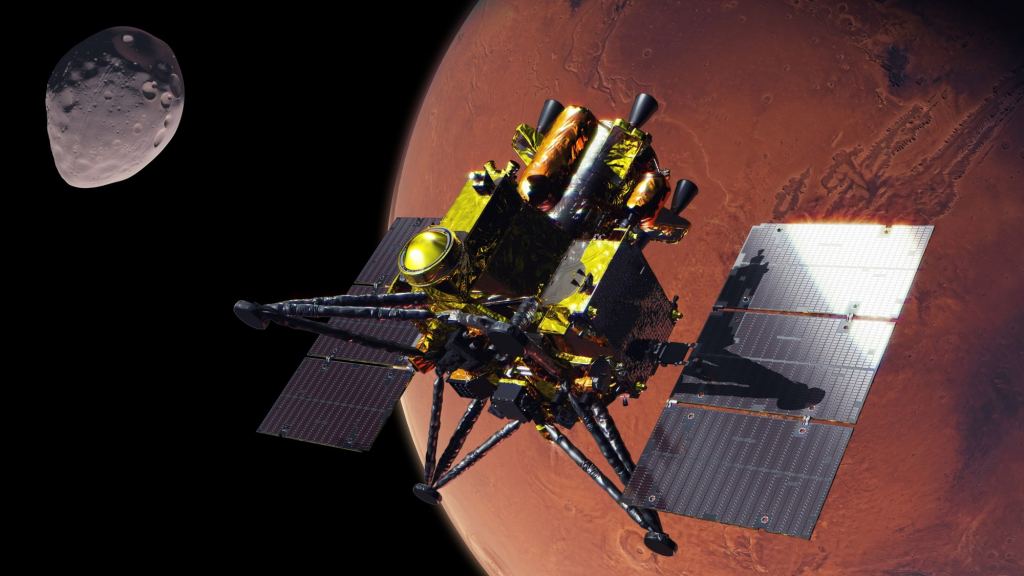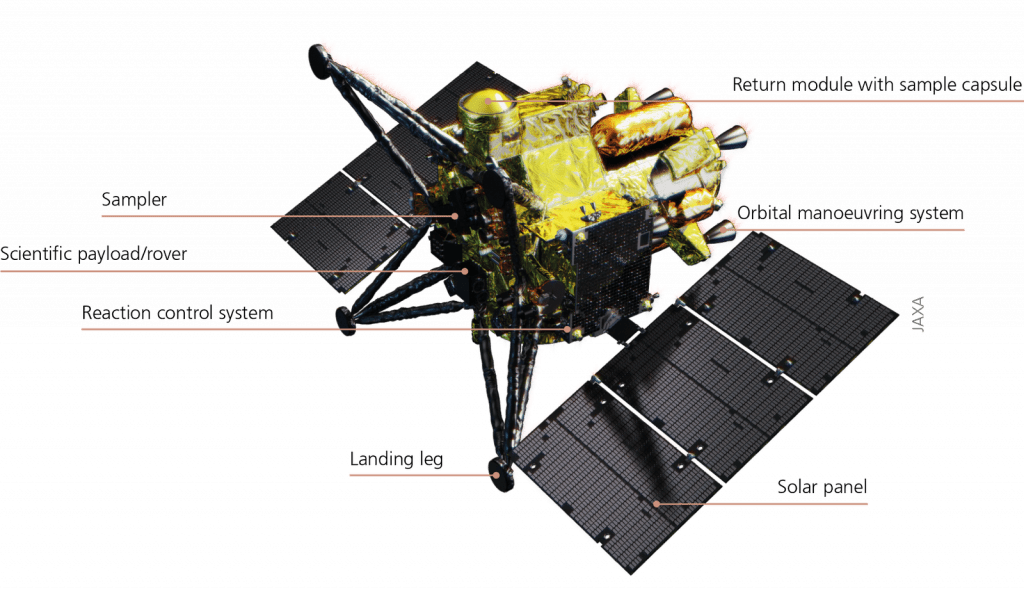At this very moment, eleven robotic missions are operating in orbit or on the surface of Mars, more than at any point during the past sixty years. These include the many orbiters surveying the Red Planet from orbit, the handful of landers and rovers, and one helicopter (Ingenuity) studying the surface. In the coming years, many more are expected, reflecting the growing number of nations participating in the exploration process. Once there, they will join in the ongoing search for clues about the planet's formation, evolution, and possible evidence that life once existed there.
However, there's also the mystery concerning the origin of Phobos and Deimos, Mars' two satellites. While scientists have long suspected that these two moons began as asteroids kicked from the Main Belt that were captured by Mars' gravity, there is no scientific consensus on this point. This is the purpose of the Martian Moons eXploration (MMX) mission currently under development by the Japan Aerospace Exploration Agency (JAXA), which will explore both moons with the help of a Phobos rover provided by the German Aerospace Center (DLR) and the French National Center of Space Studies (CNES).
A trilateral agreement that calls for cooperation between the three agencies within the framework of the MMX mission was signed by the three agencies at the Paris Air Show, which ran from June 18th to 25th in Le Bourget, France. As per the agreement, the DLR and CNES are providing the Phobos rover (officially named IDEFIX during the event), including its instruments and systems. The rover is now in the final stretch of development at the CNES site in Toulouse and is on track for completion by the summer of 2023.
Phobos and Deimos are named after the companions of Ares (the god of war) in Greek mythology, for whom Mars is the Roman equivalent. Due to their small size, both bodies are irregularly shaped and are similar in appearance to asteroids. These characteristics led to speculation that they were once asteroids that may have originated in the Main Belt and were kicked out by gravitational perturbances caused by Jupiter. This sent both bodies into the inner Solar System, where they were captured by Mars' gravity and settled into their nearly circular orbits.
The two satellites also orbit Mars near the ecliptic plane, where all the planets and most of their satellites orbit around the Sun. These orbital mechanics are hard to reconcile with the "captured asteroids" theory but are consistent with the alternate theory that Phobos and Deimos are remnants of a huge impact on Mars. The MMX mission will address this mystery by examining both moons and conducting a sample-returns from Phobos, similar to how JAXA's Hayabusa 1* and 2* spacecraft - which deployed the MINERVA lander and MASCOT rover (respectively) - returned samples from the near-Earth asteroids (NEAs) Itokawa and Ryugu.
If Phobos and Deimos originated from Mars, their surface material would be very similar in composition to Mars. Samples from Phobos are also likely to contain traces of Martian rock that were kicked up as ejecta from later asteroid impacts and landed on the moon's surface. Examining these samples could therefore reveal additional information on Mars' geological history. Per the trilateral cooperation agreement, the MMX spacecraft has a target launch date of 2024 and will land the rover on Phobos sometime in the latter half of the decade. Said Hiroshi Yamakawa, President of JAXA:
"We are very excited to collaborate with CNES and DLR as part of the MMX mission, which endeavors to clarify the origin of the Martian moons and the evolutionary process of the Martian sphere by collecting samples from one of Mars' two moons – Phobos – for the first time in space history. Japan shares a precious memory with France and Germany regarding the collaboration during the Hayabusa2 sample return mission, on which the joint CNES-DLR MASCOT lander flew. And we are looking forward to putting our efforts together once again for a successful MMX mission."
The MMX spacecraft consists of three modules: the propulsion, the exploration, and the sample return capsule. The exploration module has landing legs and a suite of instruments (including samplers) and will carry the IDEFIX rover on board. The exploration module and sample return capsule are connected to the propulsion module, where the thrusters and propellant tanks are located. The MMX design has been completed, and the project team has commenced with the spacecraft's final manufacture, testing, and integration.
After spending a year in transit, the MMX spacecraft will enter orbit around Mars, where the exploration module will begin mapping and characterizing the surfaces of Phobos and Deimos using its eight scientific instruments. When the spacecraft makes a close pass to Phobos, between 40 and 100 meters (130 and 330 ft) from the surface, it will deploy IDEFIX to the surface. The rover will then spend the next three months studying targets of interest, including sites where the MMX spacecraft will gather samples for analysis on Earth.
Engineers have integrated the rover's instruments and subsystems in the past few months with the carbon-reinforced composite chassis and locomotion system. This included the rover's solar arrays, power system, onboard computer, radio systems, and the miniRAD radiometer and Raman Spectrometer for MMX (RAX) instruments. These instruments, contributed by the DLR, will allow the rover to measure the thermal radiation emanating from Phobos' surface and characterize its mineralogical properties. The CNES has also contributed two navigational cameras and two that will monitor the wheels and the surface.
The IDEFIX rover is now in the final stretch of its space qualification tests at CNES in Toulouse, which measures its ability to withstand the intense vibrations experienced during launch. They also gauge the rover's ability to function in the vacuum and extreme temperature environment on Phobos' surface - which fluctuates by about 200 °C (360 °F). The electromagnetic compatibility (EMC) and other final tests are scheduled to happen before the rover is delivered this summer.
The qualification tests are being conducted alongside the Mechanical and Electrical Connection and Support System (MECSS) provided by the DLR, which connects the rover to the MMX spacecraft and controls its release. The communication system provided by the CNES is also being tested during this qualification campaign. This system allows the spacecraft to communicate with the rover and transmit commands and telemetry from Earth. During the signing, Anke Kaysser-Pyzalla, Chair of the DLR Executive Board, said:
"Japan and France are important strategic partner countries for DLR in almost all of our research areas. In this context, our cooperation within the framework of the MMX mission is a specific example of the creative power of our multifaceted collaboration. When a rover travels over the surface of the martian moon Phobos for the first time, we will have jointly pushed technological boundaries to learn more about the origin of the Solar System and Mars with its moons."
*Further Reading: DLR*
 Universe Today
Universe Today


